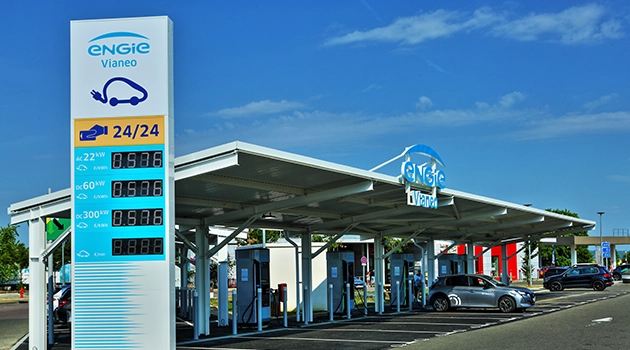Heatwaves can have a significant impact on your electric car. High temperatures affect the battery’s performance and accelerate aging. Any overheating can reduce its range and slow down the charging process. A good cooling system is therefore essential. We also recommend using air conditioning sparingly!

Summary:
The impact of heat on the battery
The impact of air conditioning
The impact of heat on the battery
The lithium-ion battery in your electric vehicle performs best between 20°C and 25°C. It heats up when the car is driven at high speeds and, of course, in hot weather. Overheating leads to a reduced range. The temperature at which it will overheat depends on the manufacturer. Beyond this temperature, your battery will perform below its rated capacity. It can be damaged at temperatures above 50°C and cannot tolerate temperatures above 70°C very well. Frequent exposure to high temperatures can also reduce your car’s range more quickly over time.
Your range will be optimized if your electric motor is powered by a battery with a good cooling system. Liquid cooling is most efficient. This technology is used in electric vehicles made by Tesla, Hyundai, Audi and Renault. Other manufacturers, such as Nissan with its Leaf model, have opted for air cooling but this may not be sufficient to maintain battery performance in hot weather.
Over time, a liquid-cooled lithium-ion battery loses a maximum of 10% of its range in 5 years, compared with a maximum of 7-8% for an air-cooled battery. We therefore recommend that you take this into account if you regularly drive in warm temperatures.
The impact of air conditioning
In hot weather, air conditioning makes journeys more comfortable. However, if you use it too much, it reduces your car’s range. For a 200 km journey in a compact electric vehicle lasting 2.5 hours, air conditioning at 2 kW can reduce the car’s range by up to 25 or 30 km. To limit this, you can adjust the power of the air conditioning without affecting its efficiency: for instance, you can direct all vents towards the passengers. Most electric cars now have a reversible heat pump: this ensures a comfortable temperature for passengers, without putting too much strain on the battery.
In addition, intense heat has an effect on the speed at which your battery charges: it automatically and gradually slows down as it starts to overheat. Heatwaves can also affect charging stations and have an impact on their performance. As a result, charging will take longer than usual in very hot weather. We recommend using covered charging stations: your vehicle can cool down a little as it charges!
Q&A
It’s between 0°C and 40°C for lithium-ion batteries. Cold and hot weather pose significant problems and can reduce range by 10% to 30%, depending on the model.
Simply turn the air conditioning on when the car is still connected to the charging point, using a mobile application, an option provided by several electric vehicle models.
It’s best to charge your car at night or early in the morning, before it gets too hot. During the day, you can opt for covered or underground charging stations – there are several mobile applications which will help you find them.
A smooth, jolt-free ride reduces the risk of the car’s battery overheating. Turn the air conditioning on while the car is charging so that you don’t need to use it as much during your journey.

